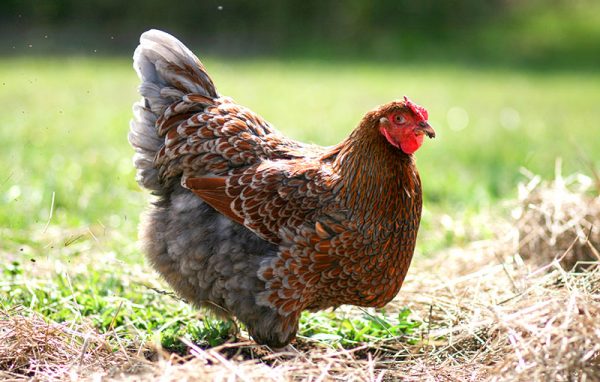
During a recent chicken check, I discovered mites in my flock. One was crawling on a fresh egg in the coop, and many more were zig-zagging across a hen’s vent area. I took immediate action, of course, but I still get the willies when I think about it.
Mites prefer a chicken’s warmest body areas, which are around the vent and under the wings. During an infestation the hens will be itchy, preening themselves more than usual and trying to pull out feathers at the vent. Always look to those warm areas when checking for mites to find an infestation early, before it affects the health of your birds. Mites lay an average of 10,000 eggs each during their short five-to-seven-day life cycle. Without intervention, you will have thousands of tiny creatures drinking your flock’s blood, which can cause anemia and eventual death.
It’s becoming popular for some to treat their mite-infested chickens with flea dips and flea-and-tick sprays intended for dogs and cats. Do they work? Yes, and immediately, but these products have not been tested for safety in your chickens. Please do not use flea-and-tick treatments on your flock. Dipping one’s backyard food in poison defeats the purpose of raising food in the yard. So let’s tackle mites naturally!
1. Build a Dust Bath
Create a dedicated dust-bathing space for your hens. While chickens will dust bathe in random places, they prefer a space made just for them filled with light, fluffy ingredients that pull away oils and coat the skin with a protective barrier. A mixture of peat moss, play sand and wood ash is all you need to provide your chickens with a superior dust bath.
Adding diatomaceous earth (DE) to the dust bath is optional, but I only recommend it if you’re already dealing with an infestation. Because chickens kick up a cloud of dust when dust bathing and inhale it when breathing, DE can damage their lungs.
2. Treat the Coop and Keep it Clean
Warmth and moisture is a breeding ground for parasites and disease. Clean the coop regularly, and replace bedding twice as often during an infestation, dusting the floor with DE each time.
In between replacing bedding, spray the coop with diluted dish soap—a natural insecticide—to kill mites that fall off your chickens. Fill a 12-ounce spray bottle with water almost to the top, add a tablespoon of dish soap, mix and spray.
3. Treat the Chickens
Mites cannot tolerate the sulfur content in garlic juice—it kills them! For treating chickens directly, I love Lisa Steele’s recipe at Fresh Eggs Daily:
- 10 ounces of water
- 1 ounce of garlic juice
- up to 1 tsp. of any (or a combination) of these oils: bay, cinnamon, clove, coriander, lavender, spearmint and/or thyme.
Remember that a natural remedy doesn’t equal safety—more is not better. Never use more garlic and essential oil than is recommended. Each can be irritating to your chickens’ skin in large amounts, and only a little is needed to be effective. Treat the flock with this mixture every other day for a couple weeks, focusing on the warmest areas of the body under the wings and around the vent until there’s no longer evidence of an infestation.
As an additional or alternative treatment, food-grade DE can be sprayed under the wings and onto the vent with a DE applicator. DE can be used alone or in addition to the garlic spray. Be sure to wear a face mask for protection if you apply DE this way.
4. Provide Fresh Garlic
Add fresh, crushed garlic to your flock’s water, or offer treats that include fresh garlic. Garlic seeps through the skin from the inside out, and because mites can’t tolerate it, they won’t want to make your flock their home.




